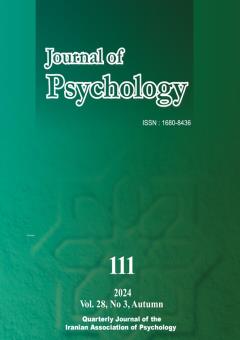Evaluation of the moderating role of Attachment Styles in the relationship between Perceived Partner Responsiveness and Marital Intimacy
Subject Areas :
Manouchehr Rezaee
1
![]() ,
Esmail Asadpour
2
,
Esmail Asadpour
2
![]() ,
sedigheh ahmadi
3
,
sedigheh ahmadi
3
![]() ,
Belal Izanloo
4
,
Belal Izanloo
4
![]()
1 - Department of Counseling, Faculty of Psychology and Educational Sciences, Kharazmi University, Tehran, Iran.
2 - Department of Counseling. , psychology and Educational Science Faculty, University of kharazmi, Tehran, Iran.
3 - Department of Counseling, Faculty of Psychology and Educational Sciences, Kharazmi University, Tehran, Iran.
4 - Department of Curriculum Planning, Faculty of Psychology and Educational Sciences, Kharazmi University, Tehran, Iran.
Keywords: Marital intimacy, Perceived Partner Responsiveness, Attachment styles,
Abstract :
Clarifying how the relationship between Perceived partner responsiveness (PPR) and Marital intimacy (MI) of individuals will differ at different levels of attachment styles and the extent and direction of this correlation in which of the attachment styles will be significant, was a problem. The aim of this study was to determine the moderating role of attachment styles in the relationship between PPR and MI. The research method was descriptive-survey in terms of data collection and correlational in terms of data analysis. The statistical population of this research was all of the married female nurses in Zanjan city in 2021. Convenience sampling method was used to select the sample and ultimately 317 nurses participated in this study. The scales used in this study were the Personal Assessment of Intimacy in Relationships (PAIR), Perceived Partner Responsiveness Scale (PPRS) and Experiences in Close Relationships– Revised (ECR-R). Pearson's correlation coefficient, path analysis and process analysis were used to analyze the dataset. Both in the simple model and in the model which encompasses interactive effects of the variables, the PPR had the greatest effect in explaining the variance of the dependent variable. After including the interactive effects into the model, only the interactive effect of PPR and attachment avoidance added approximately 2% to the explained variance of the dependent variable (β = .09, p < .05). Therefore, only avoidant attachment partially moderated the relationship between those two variables. The findings of the present study showed that insecure individuals are not necessarily evasive of intimacy and PPR is the construct that can provide the basis for the experience of intimacy in them.
